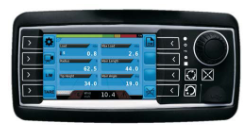CAT Syllabus for IIM Admission: A Comprehensive Guide
The Common Admission Test (CAT) is the gateway to securing admission in prestigious Indian Institutes of Management (IIMs) and other top B-schools in India. It is a highly competitive exam, and understanding the syllabus is the first step in your preparation journey. In this blog, we provide a detailed breakdown of the CAT syllabus for IIM, section-wise topics, and preparation tips to help you ace the exam.
What is the CAT Exam?
The CAT exam is a national-level entrance test conducted annually by one of the IIMs on a rotational basis. It assesses candidates on their aptitude in three key areas:
- Verbal Ability and Reading Comprehension (VARC)
- Data Interpretation and Logical Reasoning (DILR)
- Quantitative Ability (QA)
Before diving into the syllabus, let’s understand the exam’s structure:
CAT Exam Pattern:
- Number of Sections: 3
- Total Questions: 66 (may vary year to year)
- Duration: 120 minutes (40 minutes per section)
- Type of Questions: Multiple Choice Questions (MCQs) and Non-MCQs
- Marking Scheme: +3 for correct answers, -1 for incorrect MCQs, no negative marking for non-MCQs
Section-Wise Breakdown of CAT Syllabus
1. Verbal Ability and Reading Comprehension (VARC)
This section evaluates your proficiency in English language and comprehension skills. The key topics include:
Reading Comprehension:
- Passages from diverse areas such as history, science, business, technology, and philosophy
- Questions based on inference, main idea, tone, and purpose
- Critical reasoning
Verbal Ability:
- Sentence correction
- Para jumbles
- Odd one out in a sequence
- Summary writing
Preparation Tips for VARC:
- Read newspapers, magazines, and novels to improve reading speed and comprehension.
- Practice mock tests to develop a strategy for tackling lengthy passages.
- Focus on grammar rules and vocabulary-building exercises.
2. Data Interpretation and Logical Reasoning (DILR)
This section tests your ability to interpret data and solve logical puzzles. The key topics include:
Data Interpretation:
- Tables
- Bar graphs
- Line charts
- Pie charts
- Caselets
Logical Reasoning:
- Seating arrangements
- Blood relations
- Venn diagrams
- Puzzles
- Syllogisms
- Input-output sequences
Preparation Tips for DILR:
- Solve diverse problem sets to familiarize yourself with different patterns.
- Practice under timed conditions to enhance speed and accuracy.
- Focus on visual representation of data for quicker understanding.
3. Quantitative Ability (QA)
This section evaluates your mathematical skills and problem-solving abilities. The key topics include:
Arithmetic:
- Ratios and proportions
- Percentages
- Time, speed, and distance
- Simple and compound interest
- Averages and mixtures
Algebra:
- Linear and quadratic equations
- Inequalities
- Functions
Geometry and Mensuration:
- Triangles and circles
- Coordinate geometry
- Trigonometry
- Areas and volumes
Number System and Modern Math:
- Divisibility rules
- Factorization
- Permutations and combinations
- Probability
- Progressions (AP, GP, HP)
Preparation Tips for QA:
- Strengthen your basics by revisiting school-level mathematics.
- Solve practice questions from standard CAT preparation books.
- Prioritize high-weightage topics like arithmetic and algebra.
General Preparation Strategies for CAT:
1. Create a Study Plan:
Design a realistic study plan covering all sections. Allocate more time to areas where you’re weak while maintaining consistency in your stronger areas.
2. Take Mock Tests:
Mock tests are crucial for understanding the exam pattern and identifying your strengths and weaknesses. Analyze your performance and work on improving speed and accuracy.
3. Time Management:
Learn to manage your time effectively during the exam. Practice solving questions within the stipulated time to build confidence.
4. Use Quality Study Material:
Refer to trusted resources like Arun Sharma’s books for Quantitative Aptitude, Nishit Sinha’s Logical Reasoning and Data Interpretation, and online preparation platforms.
5. Revise Regularly:
Consistent revision is key to retaining concepts. Create short notes or flashcards for quick revision of formulas and important points.
FAQs about CAT Syllabus
1. Is there a fixed syllabus for CAT?
No, the CAT exam does not have a predefined syllabus. However, the topics mentioned above are derived from past year trends and are commonly covered in the exam.
2. Are calculators allowed in the CAT exam?
An on-screen calculator is provided for calculations. However, candidates are advised to practice solving problems without relying on calculators to save time.
3. How much time is required to cover the entire CAT syllabus?
The time required depends on your current proficiency level. On average, 6-9 months of dedicated preparation is sufficient.
4. Are there sectional time limits in CAT?
Yes, each section has a time limit of 40 minutes. You cannot switch between sections during this time.
5. Can non-engineers excel in the CAT exam?
Absolutely! The exam tests aptitude, not your educational background. With the right preparation, candidates from any stream can excel.
Conclusion
Preparing for the CAT exam requires a clear understanding of its syllabus, regular practice, and a strategic approach. By focusing on each section and leveraging the tips mentioned above, you can maximize your chances of securing a seat at a prestigious IIM. Remember, consistent effort and perseverance are key to acing the CAT. Start your preparation today and take a step closer to your dream B-school!
Also Read: Common Law Admission Test (CLAT) Syllabus: A Comprehensive Guide











